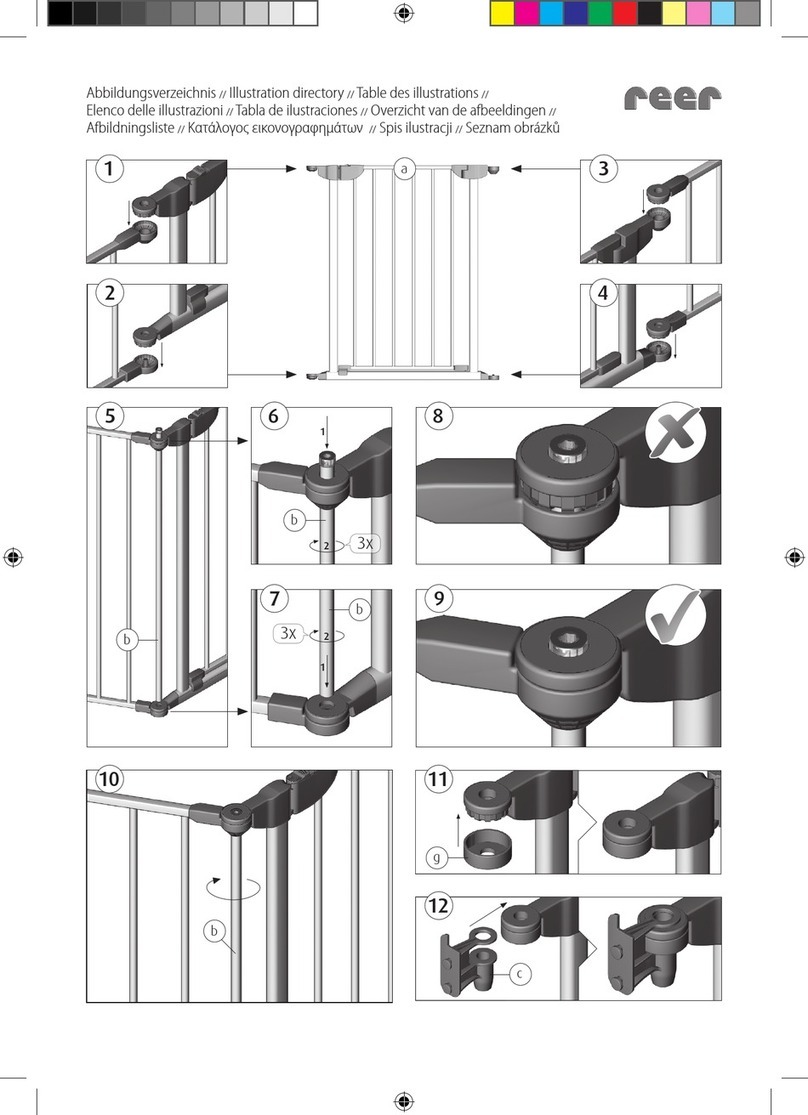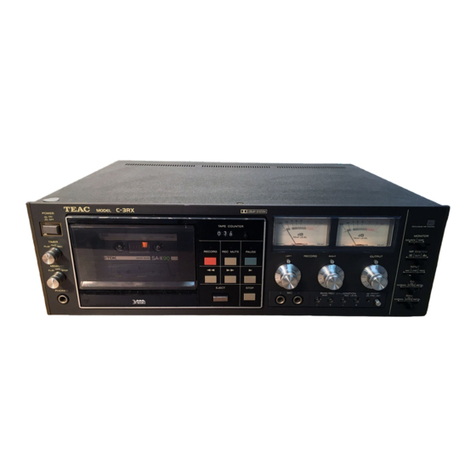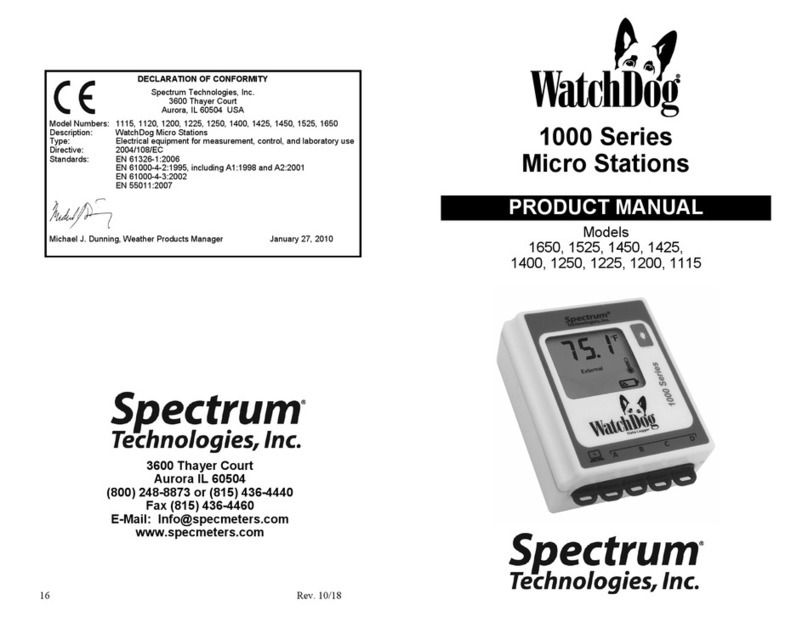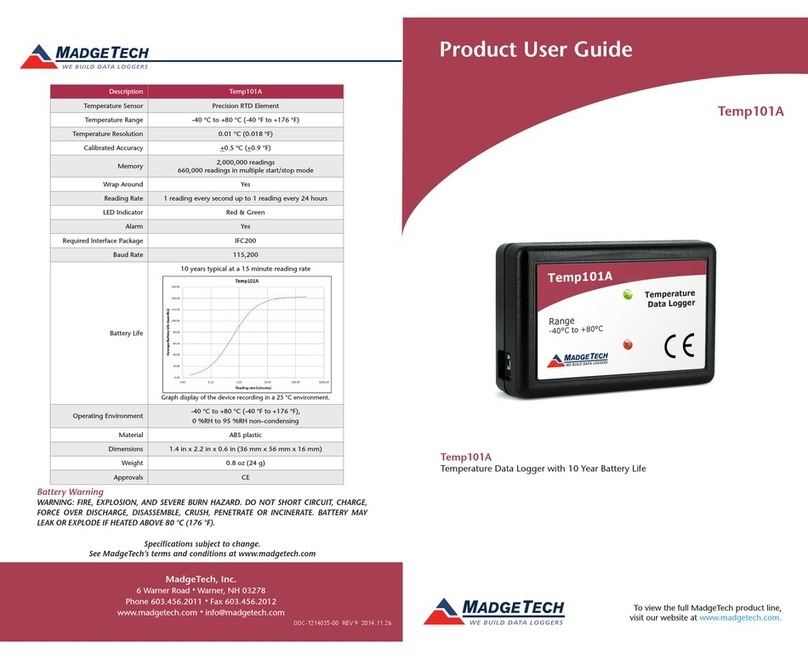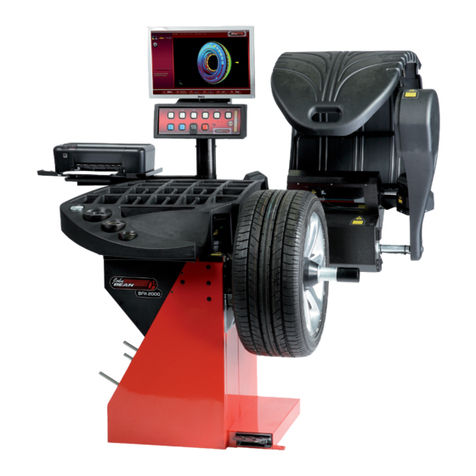Reer VISION VXL Quick start guide

8540615 • 19/12/2014 • Rev.8
1
PHOTOELECTRIC
SAFETY
BARRIER
VISION VXL
INSTALLATION USE AND MAINTENANCE
INDICE
INTRODUCTION ................................................................................................................... 2
OPERATION ......................................................................................................................... 3
INSTALLATION ..................................................................................................................... 4
POSITION ......................................................................................................................................5
SAFETY DISTANCE CALCULATION............................................................................................6
VERTICAL POSITION OF THE BARRIER ....................................................................................7
HORIZONTAL POSITION OF THE BARRIER ..............................................................................8
ELECTRICAL CONNECTIONS .....................................................................................................9
EMITTER CONNECTIONS............................................................................................................9
RECEIVER CONNECTIONS ...................................................................................................... 10
WARNINGS REGARDING THE CONNECTION CABLES......................................................... 10
EXAMPLE OF CONNECTION WITH AD SR0 WITH START/RESTART INTERLOCK ACTIVATED.. 12
CONFIGURATION AND OPERATION MODES......................................................................... 12
K1/K2 EXTERNAL CONTACTORS CONNECTION................................................................... 13
MULTIPLE SYSTEMS ................................................................................................................ 13
USE OF DEFLECTION MIRRORS............................................................................................. 15
DISTANCE BETWEEN REFLECTING SURFACES .................................................................. 16
MECHANICAL ASSEMBLY AND OPTICAL ALIGNMENT......................................................... 17
OPERATION AND TECHNICAL DATA................................................................................ 18
SIGNALS..................................................................................................................................... 18
TEST FUNCTION ....................................................................................................................... 20
PERIODICAL SYSTEM TEST .................................................................................................... 20
OUTPUT STATUS ...................................................................................................................... 20
TECHNICAL SPECIFICATIONS................................................................................................. 21
DIMENSIONS ...................................................................................................................... 22
CHECKOUTS AND MAINTENANCE ................................................................................... 24
VERIFICATION OF BARRIER EFFICIENCY ............................................................................. 24
TROUBLESHOOTING ................................................................................................................ 25
SPARE PARTS.................................................................................................................... 27
GUARANTEE ...................................................................................................................... 28

VISION VXL
2 8540615 • 19/12/2014 • Rev.8
This symbol stands by a very important warning concerning the safety of persons.
Its non-observance can cause a very serious risk for the exposed personnel.
INTRODUCTION
The VISION VXL photoelectric barrier is a multi-beam optoelectronic safety system.
It belongs to the family of Type 2 electrosensitive devices for the protection of personnel
exposed to risks arising from the use of hazardous machinery or plant, according to
standards IEC 61496-1,2 and EN 61496-1.
VISION VXL is a Type 2 photoelectric barrier composed of Emitter and Receiver with
integration of additional functions, such as the external contactors feedback control and the
manual/automatic operation management.
The LEDs present on Emitter and Receiver units labels provides the necessary information
for a correct use of the device and the evaluation of the possible operation defects.
The VISION VXL barrier system features an automatic self-diagnosis function that enables it
to detect every malfunctions (in an maximum execution time of 0,5 sec).
This safety system is permanently active and does not require any interventions from the
outside.
If necessary, for any safety-related problems contact the competent safety
authorities or industrial associations in the country of use.
For applications in the food industry, please contact the manufacturer to ensure that
the barrier contains materials that are compatible with the chemical agents utilized.
The protective function of the optoelectronic devices is not effective in the following cases:
If the machine stopping control cannot be actuated electrically and it is not possible
to stop all dangerous machine movements immediately and at any time during the
operating cycle.
If the machine generates dangerous situations due to material being expelled or
falling from overhead.
Carefully consider the risks analysis of the application and the legislation of the barrier
application Country to establish if the application is compatible with the safety category 2.

VISION VXL
8540615 • 19/12/2014 • Rev.8 3
OPERATION
If the protected area is clear, the two outputs on the Receiver are active and enable the
machine to which they are connected to operate normally.
Each time that an object bigger than or equal in size to the resolution of the system
intercepts the optical path of one or more beams, the Receiver deactivates the outputs.
This condition enables hazardous machine movements to be stopped (by means of an
adequate machine emergency stop circuit).
The resolution is the minimum dimensions that an object must have so that, on
crossing the protected area, it will certainly intercept at least one of the optical
beams generated by the barrier (Figure 1).
Figure 1
The resolution is constant irrespectively of work conditions, as it only depends on the
geometric characteristics of the lenses and the distance between the centres of two adjacent
lenses.
The height of the protected area is the height that is actually protected by the safety
barrier. If the latter is placed horizontally, this value refers to the depth of the protected area.
The working range is the maximum operative distance that can exist between the Emitter
and the Receiver.
VISION VXL is available with the following resolutions:
–30 mm (protected height from 150 mm to 1200 mm)
PROTECTION OF HANDS
–40 mm (protected height from 300 mm to 1200 mm)
PROTECTION OF HANDS
VISION VXL is available also in the Multibeam configuration with the following lens pitch:
–500mm (2 beams), 400mm (3 beams), 300mm (4 beams).
PROTECTION OF BODY
P = Pitch between two lenses
D = Diameter of one lens
R = Resolution = P+D

VISION VXL
4 8540615 • 19/12/2014 • Rev.8
INSTALLATION
Before installing the VISION VXL safety system, make sure that:
The safety system is only used as a stopping device and not as a machine control
device.
The machine control can be actuated electrically.
All dangerous machine movements can be interrupted immediately. In particular, the
machine stopping times must be known and, if necessary, measured.
The machine does not generate dangerous situations due to materials projecting or
falling from overhead; if that is not the case, additional mechanical guards must be
installed.
The minimum dimensions of the object that must be intercepted are greater than or
equal to the resolution of the specific model.
Knowledge of the shape and dimensions of the dangerous area enables the width and height
of the relative access area to be calculated.
Compare these dimensions with the maximum working range and the height of the
protected area in relation to the specific model.
The general instructions set out below must be taken into consideration before placing the
safety device in position.
Make sure that the temperature of the environment in which the system is to be
installed is compatible with the temperature parameters contained in the technical
data sheet.
Do not install the Emitter and Receiver close to bright or high-intensity flashing light
sources.
Certain environmental conditions may affect the monitoring capacity of the
photoelectric devices. In order to assure correct operation of equipment in places
that may be subject to fog, rain, smoke or dust, the appropriate correction factors Cf
should be applied to the maximum working range values. In these cases:
where Pu and Pm are, respectively, the working and maximum range in meters.
Pu = Pm x Cf

VISION VXL
8540615 • 19/12/2014 • Rev.8 5
The recommended Cf factors are shown in the table below:
ENVIRONMENTAL CONDITION
CORRECTION FACTOR Cf
Fog
0.25
Steam
0.50
Dust
0.50
Dense fumes
0.25
If the device is installed in places that are subject to sudden changes in temperature,
the appropriate precautions must be taken in order to prevent the formation of
condensation on the lenses, which could have an adverse effect on monitoring.
POSITION
The position of the VXLE Emitter and the VXLR Receiver must prevent access to the danger
zone from above, below and from the sides, unless at least one of the optical beams has
been intercepted. Some useful information regarding the correct position of the barrier is
shown in the figure below.
Incorrect positioning of barrier
Correct positioning of barrier
Figure 2

VISION VXL
6 8540615 • 19/12/2014 • Rev.8
SAFETY DISTANCE CALCULATION
The barrier must be installed at a distance that is greater than or equal to the minimum
safety distance S, so that a dangerous point can only be reached after all hazardous
machine movements have stopped (Figure 3).
According to European standard EN999, the minimum safety distance Smust be calculated
using the following formula:
S = K (t1+ t2) + C
where:
S
minimum safety distance
mm
K
approach speed of object to the dangerous area
mm/sec
t1
response time of the safety barrier in seconds
sec
t2
machine response time, in seconds, meaning the time
required for the machine to interrupt the dangerous movement
following transmission of the stop signal
sec
c
additional distance
mm
The non-observance of the correct safety distance reduces or cancels the protective
action of the light curtain.
If the position of the barrier does not prevent the operator from having access to the
dangerous area without being detected, additional mechanical guards must be
installed to complete the system.
“S”=Safety distance
Figure 3
HAZARDOUS
MACHINE
S

VISION VXL
8540615 • 19/12/2014 • Rev.8 7
VERTICAL POSITION OF THE BARRIER
30 mm and 40 mm resolution models.
These models are suitable for the protection of
hands.
The minimum safety distance Sis calculated
according to the following formula:
S = 2000(t1+ t2) + 8(D-14)
(D=resolution)
This formula is valid for distances Sbetween 100
and 500 mm. If this formula results in Sbeing
greater than 500 mm, the distance can be reduced
to a minimum of 500 mm by means of the following
formula:
S = 1600(t1+ t2) + 8(D-14)
If, due to the specific configuration of the machine,
the dangerous area can be accessed from above,
the highest beam of the barrier must be at a height
Hof at least 1800 mm from the base Gof the
machine.
Figure 4
Multibeam Models.
These models are suitable for the protection of
the entire body and must not be used to protect
arms or legs.
The minimum safety distance Sis calculated
according to the following formula:
S = 1600 (t1+ t2) + 850
The reccomended height Hfrom the base
(G) must be the following:
Figure 5
MODEL
BEAMS
Reccomended Height H (mm)
VXL 2B
VXL 3B
VXL 4B
2
3
4
400 –900
300 –700 –1100
300 –600 –900 - 1200
safety
barrier
point of
danger
direction
of
approach
reference plane
safety barrier
point of
danger
direction
of
approach
reference plane

VISION VXL
8 8540615 • 19/12/2014 • Rev.8
HORIZONTAL POSITION OF THE BARRIER
When the object’s direction of approach is parallel to
the floor of the protected area, the barrier must be
installed so that the distance between the outer limit
of the dangerous area and the most external optical
beam is greater than or equal to the minimum safety
distance Scalculated as follows:
S = 1600(t1+ t2) + 1200 –0.4H
where His the height of the protected surface from
the base of the machine;
H = 15(D-50)
(D=resolution)
In this case, Hmust always be less than 1 meter.
Figure 6
safety barrier
point of
danger
direction
of approach
reference plane

VISION VXL
8540615 • 19/12/2014 • Rev.8 9
ELECTRICAL CONNECTIONS
WARNINGS
Before making the electrical connections, make sure that the supply voltage complies with
that specified in the technical data sheet.
Emitter and Receiver units must be supplied with 24Vdc±20% power supply that
guarantee safe isolation from main voltage.
The external power supply must comply with the standard EN 60204-1 (Chapter 6.4).
The electrical connections must be made according to the diagrams in this manual. In
particular, do not connect other devices to the connectors of the Emitter and Receiver.
For reliability of operation, when a diode jumper supply unit is used, its output capacity must
be at least 2000µF for each absorbed A.
EMITTER CONNECTIONS
5 poles M12 connector
PIN
COLOR
NAME
TYPE
DESCRIPTION
FUNCTIONING
1
Brown
24VDC
INPUT
+24VDC power
supply
-
3
Blue
0VDC
0VDC power supply
-
5
Grey
FE
Ground connection
-
2
White
TEST
TEST request
-Operation without TEST (+24VDC)
-TEST request (Transition
+24VDC -> 0VDC or open circuit)
4
Black
N.C.
-
N.C.
-
Table 1

VISION VXL
10 8540615 • 19/12/2014 • Rev.8
RECEIVER CONNECTIONS
8 poles M12 connector
PIN
COLOR
NAME
TYPE
DESCRIPTION
FUNCTIONING
2
Brown
24VDC
-
+24VDC power supply
-
7
Blue
0VDC
-
0VDC power supply
-
8
Red
FE
-
Ground connection
-
1
White
OSSD1
OUTPUT
Safety
static outputs
PNP active high
3
Green
OSSD2
OUTPUT
5
Grey
SEL_A
INPUT
Barrier configuration
According the normative EN61131-2
(ref. Par. "Configuration
and operation modes")
6
Pink
SEL_B
INPUT
4
Yellow
K1_K2
INPUT
External contactors
Feedback
Table 2
WARNINGS REGARDING THE CONNECTION CABLES
For connections over 50m long, use cables with a cross-section area
of 1 mm2.
The power supply to the barrier should be kept separate from that to other
electric power equipment (electric motors, inverters, frequency converters) or
other sources of disturbance.
Connect the Emitter and the Receiver to the ground outlet.
The connection cables must follow a different route to that of the other power
cables.

VISION VXL
8540615 • 19/12/2014 • Rev.8 11
Example of connection in MANUAL mode
with external contactors K1-K2
Figure 7
Example of connection in AUTOMATIC mode
with external contactors K1-K2
Figure 8
If the TEST function is not required by the application, connect pin 2 of the
emitter to +24Vdc.

VISION VXL
12 8540615 • 19/12/2014 • Rev.8
EXAMPLE OF CONNECTION WITH AD SR0 WITH START/RESTART INTERLOCK ACTIVATED
CONFIGURATION AND OPERATION MODES
The VISION VXL operation mode is selected realizing appropriate connections on the M12
8 poles of the Receiver (Table 3 and Table 4).
AUTOMATIC MODE
The VISION VXL light curtain does not dispose of a start/restart interlock circuit in
automatic mode. In most applications this safety function is necessary. Please
consider the risk-analysis of your application about this matter.
In AUTOMATIC functioning, the two static outputs OSSD1 and OSSD2 follow the status of
the guarded opening.
with the area guarded clear, the outputs will supply +24VDC
with the area occupied they will supply 0VDC.
CONNECTION
OPERATION MODE
SEL_A (PIN 5)
connected to :
OSSD1 (PIN 1)
SEL_B (PIN 6)
connected to :
OSSD2 (PIN 3)
K1_K2 (PIN 4)
connected to :
0VDC
AUTOMATIC without
K1-K2 feedback
control
SEL_A (PIN 5)
connected to :
OSSD2 (PIN 3)
SEL_B (PIN 6)
connected to :
OSSD1 (PIN 1)
K1_K2 (PIN 4)
connected to : 24VDC
(through series of
contatcts N.C. of
external relays)
AUTOMATIC with
K1-K2 feedback
control
Table 3

VISION VXL
8540615 • 19/12/2014 • Rev.8 13
MANUAL MODE
Use of manual mode (start/restart interlock activated) is compulsory if the safety
device controls an opening to protect a danger area and a person, after passing
through the opening, may remain in the danger area without being detected (use as
'trip device' according to IEC 61496). Failure to comply with this rule may result in
very serious hazards for the persons exposed.
In this operating mode the safety outputs OSSD1 and OSSD2 are activated (+24VDC) only if
the protected area is free and after the reception of the RESTART signal, using a push
button or thank to an appropriate control on the SEL_A or SEL_B input (ref. Table 4).
After an interception of the protected area, the safety outputs will be de-activated.
To re-activate them it will be necessary to repeat the sequence described above.
The RESTART command is active with a voltage of +24VDC.
The minimum duration of the RESTART command is 100ms.
CONNECTION
OPERATION MODE
SEL_A (PIN 5)
connected to :
24VDC (PIN 2)
SEL_B (PIN 6)
connected to :
24VDC (PIN 2)
(through the RESTART
pushbutton)
K1_K2 (PIN 4)
connected to :
0VDC
MANUAL without K1-K2
feedback control
SEL_A (PIN 5)
connected to :
24VDC (PIN 2)
(through the RESTART
pushbutton)
SEL_B (PIN 6)
connected to :
24VDC (PIN 2)
K1_K2 (PIN 4)
connected to : 24VDC
(through series of contatcts
N.C. of external relays)
MANUAL with
K1-K2 feedback control
Table 4
K1/K2 EXTERNAL CONTACTORS CONNECTION
In every operating mode the K1/K2 external contactors feedback is activable.
If you want to use this control feature, connect the pin 4 of 8 poles M12 connector with the
power supply (+24VDC) through the series of N.C. contatcts (feedback) of external
contactors.
MULTIPLE SYSTEMS
When more than one VISION VXL system is used, precautions must be taken to avoid
optical interference between them: install units so that the beam emitted by the Emitter of
one system can only be received by the relative Receiver.
Figure 9 illustrates some examples of correct positioning when two photoelectric systems are
installed. Incorrect positioning could generate interference, and may result in malfunctioning.
+24VDC
4
RX
K1 K2

VISION VXL
14 8540615 • 19/12/2014 • Rev.8
Figure 9
Systems installed alongside each other: A
Installation of two adjacent Emitters
Overlapping systems: B
L-shaped installation: C
Crossed positioning of Emitters and receivers

VISION VXL
8540615 • 19/12/2014 • Rev.8 15
USE OF DEFLECTION MIRRORS
In order to protect or control areas that can be accessed from more than one side, in addition
to the Emitter and Receiver, one or more deflection mirrors can be installed.
These mirrors enable the optical beams generated by the Emitter to be deviated on one or
more sides.
If the beams emitted by the Emitter must be deviated by 90°, the perpendicular to the
surface of the mirror must form an angle of 45° with the direction of the beams.
The following figure illustrates an application in which two deviation mirrors are used to
provide a U-shaped protection.
Figure 10
The following rules should be taken into consideration when using deviation mirrors:
Place the mirrors so as to ensure compliance with the minimum safety distance
S(Figure 10) on each side from which the danger zone can be accessed.
The working distance (range) is given by the sum of the lengths of all the sides
that give access to the protected area. (Remember that for each mirror used
the maximum working range between the Emitter and the Receiver is
reduced by 15%).
During installation, take great care to avoid twisting along the longitudinal axis
of the mirror.
Make sure, by standing near to and on the axis of the Receiver, that the entire
outline of the Emitter is visible on the first mirror.
The use of more than three deviation mirrors is not recommended.

VISION VXL
16 8540615 • 19/12/2014 • Rev.8
DISTANCE BETWEEN REFLECTING SURFACES
The presence of reflecting surfaces in proximity of the photoelectric barrier may generate
spurious reflections that prevent monitoring. With reference to Figure 11, object Ais not
detected because surface Sreflects the beam and closes the optical path between the
Emitter and Receiver. A minimum distance dmust therefore be maintained between any
reflecting surfaces and the protected area. The minimum distance dmust be calculated
according to the distance lbetween the Emitter and the Receiver, considering that the angle
of projection and reception is 5°.
Figure 11
Figure 12 illustrates the values for the minimum distance dthat must be maintained when
the distance lbetween the Emitter and Receiver is changed.
Figure 12
After installing the system, check whether any reflecting surfaces intercept the beams, first in
the centre and then in the vicinity of the Emitter and Receiver. During these operations, the
red LED on the Receiver should never, for any reason switch off.

VISION VXL
8540615 • 19/12/2014 • Rev.8 17
MECHANICAL ASSEMBLY AND OPTICAL ALIGNMENT
The Emitter and the Receiver must be assembled opposite each other (at a distance
specified in the technical data sheet). Use the fastening brackets and inserts supplied with
the system to place the Emitter and the Receiver so that these are aligned and parallel to
each other and with the connectors facing the same way.
Depending on the dimensions and the shape of the support on which they are to be installed,
the Emitter and Receiver must be assembled with the fastening inserts at the back, or else
by fitting these in the side groove (Figure 13).
Perfect alignment of the Emitter and Receiver is essential in order to assure correct barrier
operation. The indicator LEDs on the Emitter and Receiver facilitate this operation.
To perform an easier alignment the use of SFB circular brackets is necessary.
These are available on request (ordering code 1330974).
Figure 13
Position the optical axis of the first and last beam of the Emitter on the same
axis as that of the corresponding beams on the Receiver.
Move the Emitter in order to find the area within which the green LED on the
Receiver stays on, then position the first beam of the Emitter (the one close to
the indicator LEDs) in the centre of this area.
Using this beam as a pivot, effect small sideways movements of the opposite
end to move to the protected area clear condition. The green LED on the
Receiver will indicate this condition.
Lock the Emitter and Receiver in place.
If the Emitter and the Receiver are assembled in areas that are subject to strong
vibrations, the use of vibration-damping supports is necessary, in order to
prevent circuit malfunctions (code SAV-3 1200088, code SAV-4 1200089).

VISION VXL
18 8540615 • 19/12/2014 • Rev.8
OPERATION AND TECHNICAL DATA
SIGNALS
The LEDs showed on Emitter and Receiver units labels are visualized depending on the
system operation phase. The tables below shows the different signals (ref. Figure 14).
EMITTER RECEIVER
Figure 14
EMITTER SIGNALS
Normal operation
MEANING
RED (2)
GREEN (3)
(TEST)
YELLOW (1)
Power on. Initial test
ON
OFF
ON
Normal operation. HIGH range
OFF
ON
OFF
TEST
OFF
ON
ON

VISION VXL
8540615 • 19/12/2014 • Rev.8 19
RECEIVER SIGNALS
Normal operation
MEANING
LED
RED (5)
GREEN (7)
(CLEAR)
YELLOW (4)
(OSSD)
RED (6)
System power on. Initial TEST
ON
OFF
ON
ON
Light-on for 10sec: Manual
with feedback disabled
OFF
ON
blinking every
2sec
OFF
Light-on for 10sec: Manual
with feedback enabled
OFF
ON
blinking every
1/2sec
OFF
Light-on for 10sec: Automatic
with feedback disabled
OFF
ON
blinking every
2sec
ON
Light-on for 10sec: Automatic
with feedback enabled
OFF
ON
blinking every
1/2sec
ON
BREAK condition (A)
ON
OFF
OFF
OFF
CLEAR condition (B)
ON
OFF
ON
OFF
GUARD Condition (C)
OFF
ON
OFF
OFF
(A) Barrier occupied - output disabled
(B) Barrier free - output disabled - Waiting for restart
(C) Barrier free - output enabled
Configuration errors
MEANING
LED
RED (5)
GREEN
(7)
(CLEAR)
YELLOW (4)
(OSSD)
RED (6)
Customer configuration rejected
ON
OFF
4 consecutive
pulses
OFF
OSSD erroneously connected to 24VDC
ON
OFF
OFF
5 consecutive
pulses
External Feedback contactors missed
ON
OFF
5 consecutive
pulses
OFF
On the emitter of the Multibeam models, near each beam, is present a red led
which permits an easy detection of the beam.

VISION VXL
20 8540615 • 19/12/2014 • Rev.8
TEST FUNCTION
The TEST function is available should the user wish to check equipment connected
downstream of the barrier (without physically entering the protected area).
By means of this function the OSSDs can be switched from ON to OFF as long as the
function remains active. Please see Table 2 (page 10) for details about the use of the test
function. With the test function, which simulates occupation of the protected area, it possible
to verify the operation of the entire system by means of an external supervisor (e.g. PLC,
control module, etc.).
ReeR recommend to operate a TEST function before each work shift to check equipment
connected downstream of the barrier.
The minimum duration of the TEST function must be 40 msec.
PERIODICAL SYSTEM TEST
According the Standard EN 61496-1, a Type 2 photoelectric barrier must carry out a
periodical system test. As decribed above, the VISION VXL barrier features an automatic
self-diagnosis function which is permanently active and verify the entire VXL operation (with
a periodic auto-test every 500ms).
OUTPUT STATUS
The VISION VXL features two static PNP outputs on the Receiver, the status of which
depends on the condition of the protected area.
The maximum load allowed is 500mA at 24VDC, which corresponds to a resistive load of
48. Maxim load capacity corresponds to 2F. The meaning of the status of outputs is
defined in the table below. Any short circuit between outputs or between outputs and 24VDC
or 0VDC power supplies is detected by the barrier.
NAME OF SIGNAL
CONDITION
MEANING
OSSD1
24VDC
Barrier clear condition
OSSD2
OSSD1
0VDC
Barrier engaged condition or failure detected
OSSD2
Table 5
In the protected area clear condition, the Receiver supplies a voltage of 24 VDC on
both outputs. The required load must therefore be connected between the output
terminals and the 0DVC (Figure 15).
Figure 15
Maximum
load 500mA
Maximum
load 500mA
Table of contents
Other Reer Other manuals
Popular Other manuals by other brands
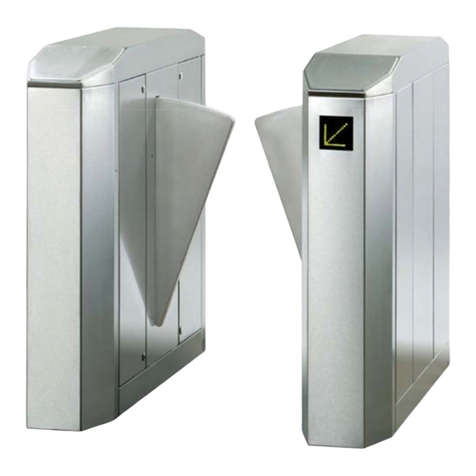
Magnetic Autocontrol
Magnetic Autocontrol MPR 112 Operation and installation instructions
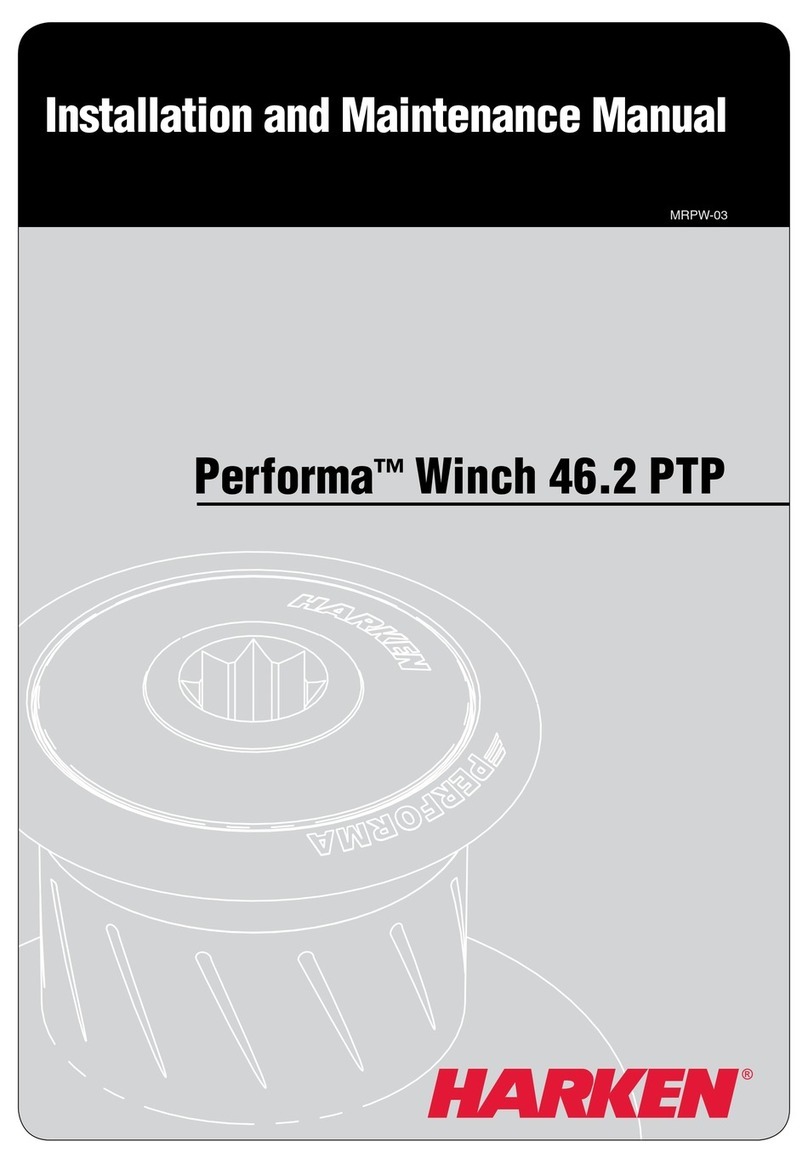
Harken
Harken Performa 46.2 PTP Installation and maintenance manual

berlinger
berlinger Fridge-tag 2 Quick user guide

PrimeVOLT
PrimeVOLT V1000 Installation & operation manual
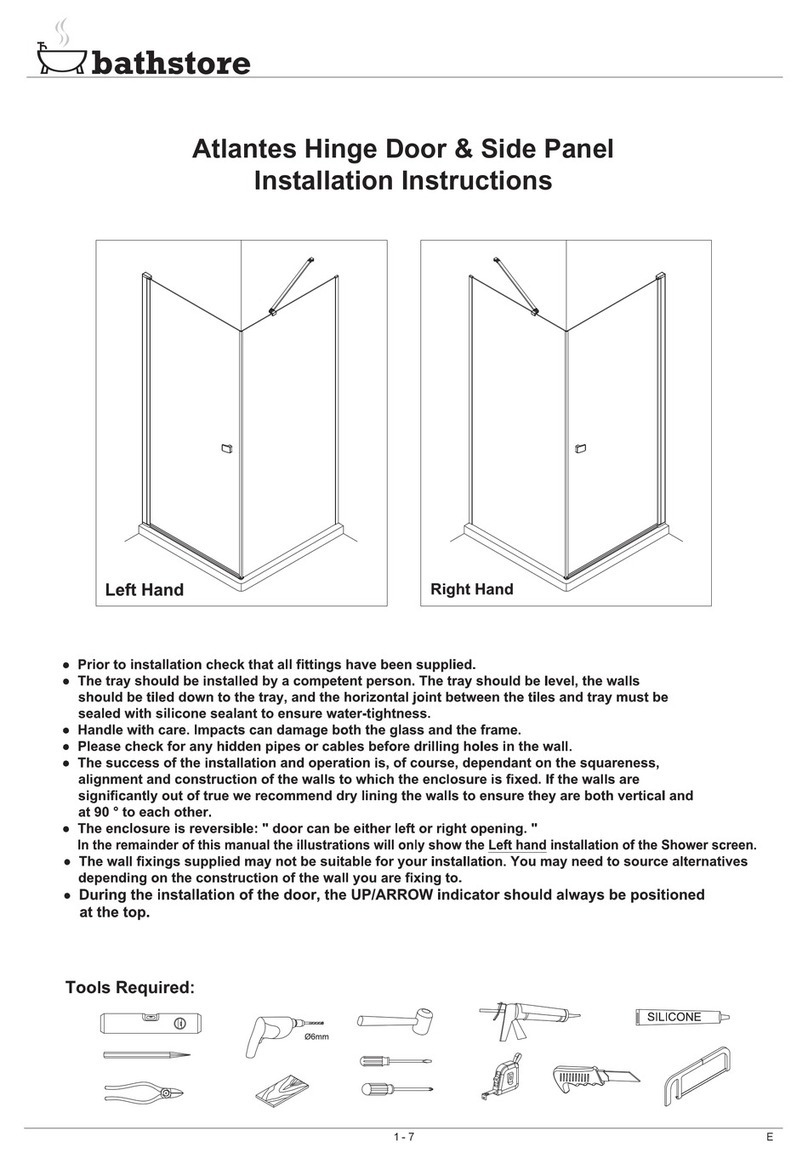
bathstore
bathstore Atlantes installation instructions

Buyers Products Company
Buyers Products Company Truck Star BA0972 installation instructions

Weston
Weston 01-0201 instructions

Drester
Drester Boxer Quattro Combo DB44C Operation manual

BD Diesel Performance
BD Diesel Performance FlowMAX Lift Pump V3 installation instructions

USP
USP DuraMax Series owner's manual
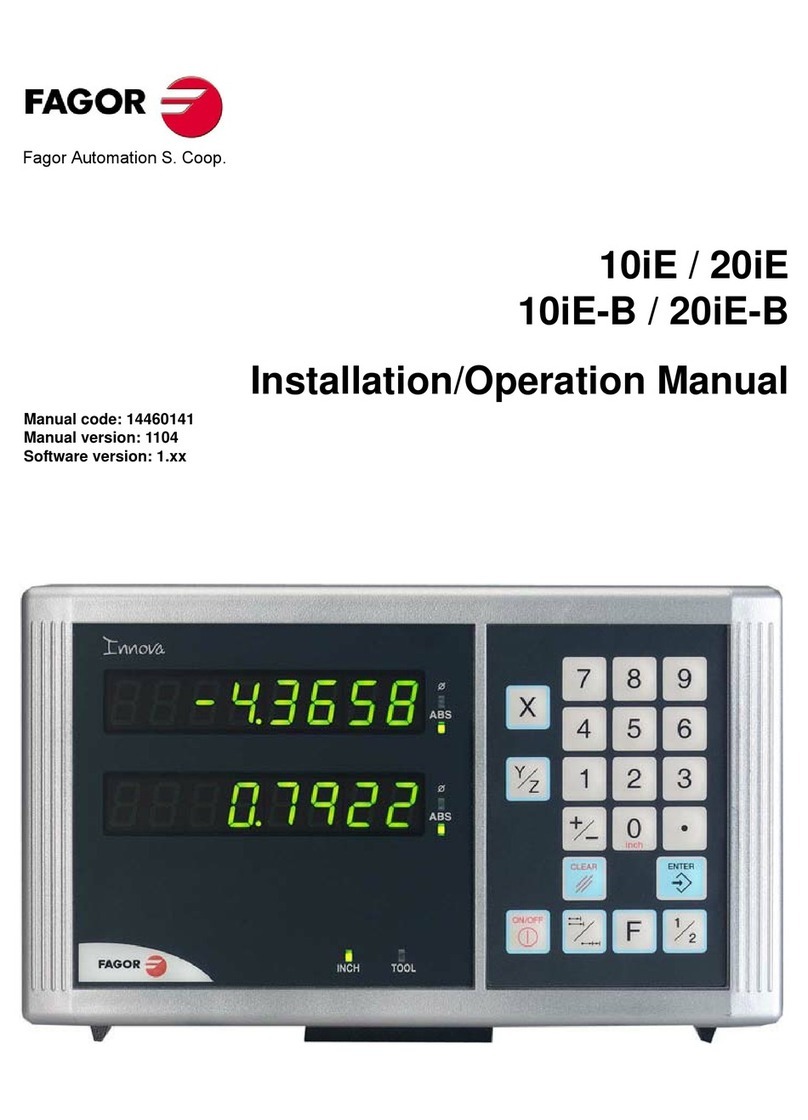
Fagor
Fagor 10iE Installation & operation manual

CAME
CAME G4040E Installation and operation
